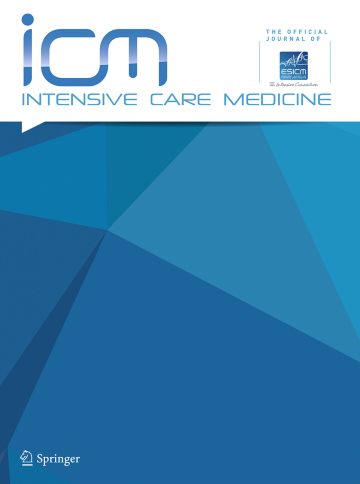美罗培南和哌拉西林/他唑巴坦优化了危重患者接受肾脏替代治疗的给药方案。
IF 21.2
1区 医学
Q1 CRITICAL CARE MEDICINE
引用次数: 0
摘要
目的:由于药代动力学的变化,危重患者接受肾替代治疗(RRT)时美罗培南和哌拉西林/他唑巴坦的最佳剂量是不确定的。我们的目标是为这些抗生素制定可推广的优化剂量建议。方法前瞻性、多国药代动力学研究,包括需要各种形式RRT的患者。开发独立的种群PK模型,外部验证并应用Monolix和Simulx进行蒙特卡罗给药模拟。我们计算了这些给药方案达到标准和高治疗性非结合抗生素浓度的概率,超过100%的给药间隔用于治疗肠杆菌和铜绿假单胞菌。结果我们从12个国家的22个重症监护室招募了300名患者,接受持续静脉-静脉血液透析(13.0%)、血液滤过(23.3%)、血液滤过(48.4%)或持续低效率透析(15.3%)。利用234例患者(8322份样本)的数据建立模型,并对另外66例患者(560份样本)进行验证。预测性能高,美罗培南的平均预测误差为- 5.2%,哌拉西林的平均预测误差为- 16.9%。给药模拟显示,美罗培南和哌拉西林/他唑巴坦的给药需求与尿量、RRT强度和持续时间有关(p < 0.05)。在所有情况下,与短时间输注相比,延长/连续输注能以较低的日剂量更好地达到有效浓度。开发了给药图,以告知不同RRT设置,尿量和目标浓度的给药。结论RRT的强度、持续时间和尿量决定了接受RRT的危重患者美罗培南和哌拉西林/他唑巴坦的剂量需求。延长/连续输注有助于达到有效浓度。本文章由计算机程序翻译,如有差异,请以英文原文为准。
Meropenem and piperacillin/tazobactam optimised dosing regimens for critically ill patients receiving renal replacement therapy.
PURPOSE
Optimal dosing of meropenem and piperacillin/tazobactam in critically ill patients receiving renal replacement therapy (RRT) is uncertain due to variable pharmacokinetics. We aimed to develop generalisable optimised dosing recommendations for these antibiotics.
METHODS
Prospective, multinational pharmacokinetic study including patients requiring various forms of RRT. Independent population PK models were developed, externally validated and applied to perform Monte Carlo dosing simulations using Monolix and Simulx. We calculated the probability that these dosing regimens achieved standard and high therapeutic unbound antibiotic concentrations over 100% of the dosing interval for the treatment of Enterobacterales and Pseudomonas aeruginosa.
RESULTS
We enrolled 300 patients from 22 intensive care units across 12 countries receiving continuous veno-venous haemodialysis (13.0%), haemofiltration (23.3%), haemodiafiltration (48.4%) or sustained low-efficiency dialysis (15.3%). Models were developed using data from 234 patients (8322 samples) and validated with 66 additional patients (560 samples). Predictive performance was high, with mean prediction errors of - 5.2% for meropenem and - 16.9% for piperacillin. Dosing simulations showed that meropenem and piperacillin/tazobactam dosing requirements were dependent on urine output and RRT intensity and duration (p < 0.05). In all scenarios, extended/continuous infusions led to a better achievement of effective concentrations with lower daily doses compared to short infusion. Dosing nomograms were developed to inform dosing for different RRT settings, urine outputs, and target concentrations.
CONCLUSION
RRT intensity and duration and urine output determine meropenem and piperacillin/tazobactam dosing requirements in critically ill patients receiving RRT. Extended/continuous infusions facilitate the attainment of effective concentrations.
求助全文
通过发布文献求助,成功后即可免费获取论文全文。
去求助
来源期刊

Intensive Care Medicine
医学-危重病医学
CiteScore
51.50
自引率
2.80%
发文量
326
审稿时长
1 months
期刊介绍:
Intensive Care Medicine is the premier publication platform fostering the communication and exchange of cutting-edge research and ideas within the field of intensive care medicine on a comprehensive scale. Catering to professionals involved in intensive medical care, including intensivists, medical specialists, nurses, and other healthcare professionals, ICM stands as the official journal of The European Society of Intensive Care Medicine. ICM is dedicated to advancing the understanding and practice of intensive care medicine among professionals in Europe and beyond. The journal provides a robust platform for disseminating current research findings and innovative ideas in intensive care medicine. Content published in Intensive Care Medicine encompasses a wide range, including review articles, original research papers, letters, reviews, debates, and more.
 求助内容:
求助内容: 应助结果提醒方式:
应助结果提醒方式:


